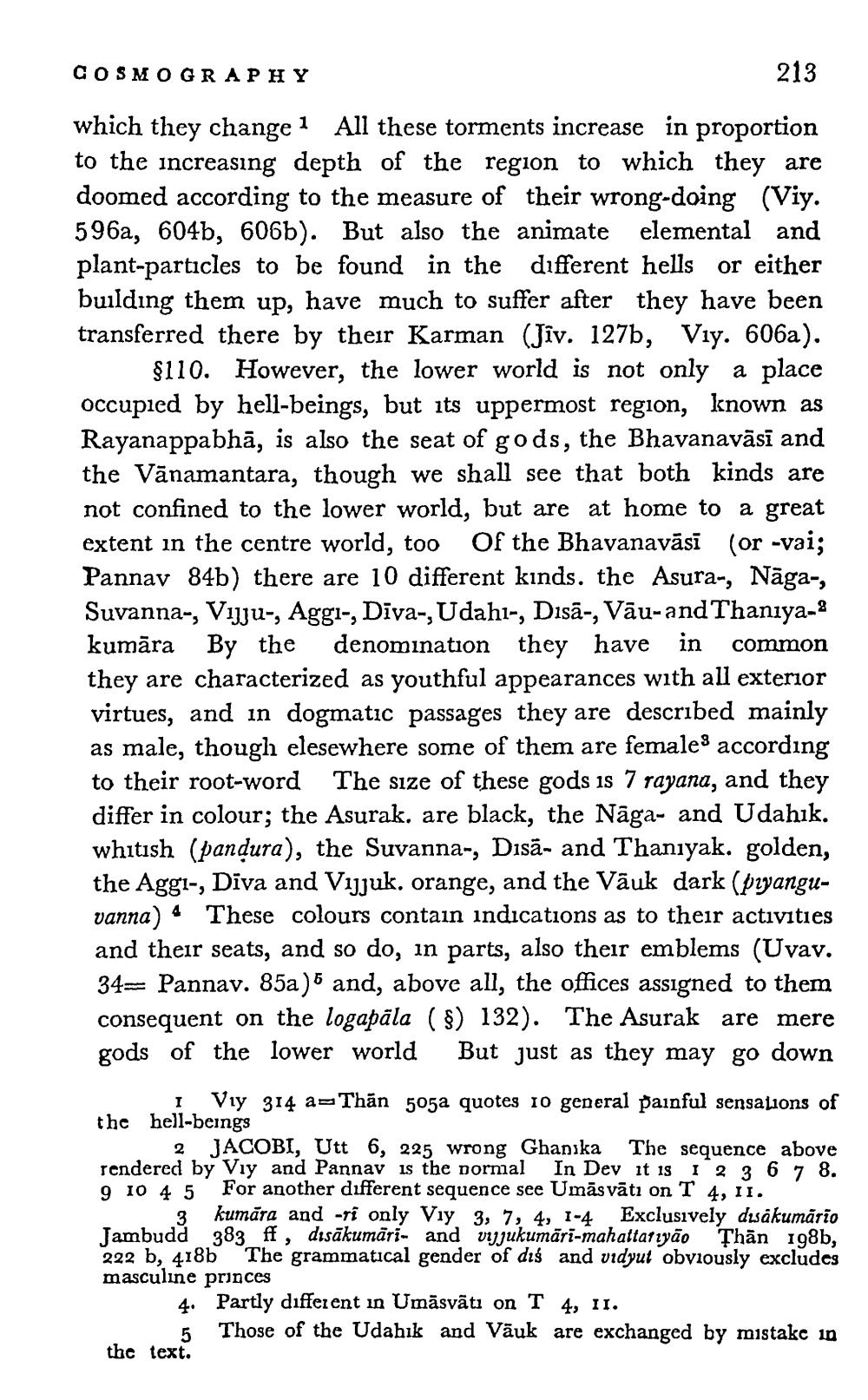________________
COSMOGRAPHY
which they change 1 All these torments increase in proportion to the increasing depth of the region to which they are doomed according to the measure of their wrong-doing (Viy. 596a, 604b, 606b). But also the animate elemental and plant-particles to be found in the different hells or either building them up, have much to suffer after they have been transferred there by their Karman (Jiv. 127b, V1y. 606a). $110. However, the lower world is not only a place occupied by hell-beings, but its uppermost region, known as Rayanappabhā, is also the seat of gods, the Bhavanavāsī and the Vanamantara, though we shall see that both kinds are not confined to the lower world, but are at home to a great extent in the centre world, too Of the Bhavanavāsī (or -vai; Pannav 84b) there are 10 different kinds. the Asura-, Naga-, Suvanna-, Vijju-, Aggi-, Dīva-, Udahi-, Disã-, Vau- and Thaniyakumāra By the denomination they have in common they are characterized as youthful appearances with all exterior virtues, and in dogmatic passages they are described mainly as male, though elesewhere some of them are females according to their root-word The size of these gods is 7 rayana, and they differ in colour; the Asurak. are black, the Naga- and Udahık. whitish (pandura), the Suvanna-, Disã- and Thaniyak. golden, the Aggi-, Diva and Vijjuk. orange, and the Väuk dark (pyanguvanna) These colours contain indications as to their activities and their seats, and so do, in parts, also their emblems (Uvav. 34 Pannav. 85a) and, above all, the offices assigned to them consequent on the logapala (§) 132). The Asurak are mere gods of the lower world But just as they may go down
213
I V1y 314 a-Than 505a quotes 10 general painful sensations of
the hell-beings
2 JACOBI, Utt 6, 225 wrong Ghanika The sequence above rendered by Viy and Pannav is the normal In Dev it is 1 2 3 6 7 8. 9 10 4 5 For another different sequence see Umās vāti on T 4, 11. kumāra and -ri only Viy 3, 7, 4, 1-4 Exclusively disākumārio Jambudd 383 ff, disākumāri- and vjjukumari-mahattariyão Than 198b, 222 b, 418b The grammatical gender of dis and vidyut obviously excludes masculine princes
3
4. Partly different in Umäsvati on T 4, 11.
Those of the Udahik and Vauk are exchanged by mistake in
5
the text.




